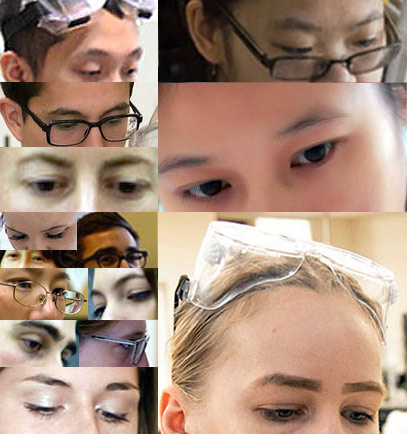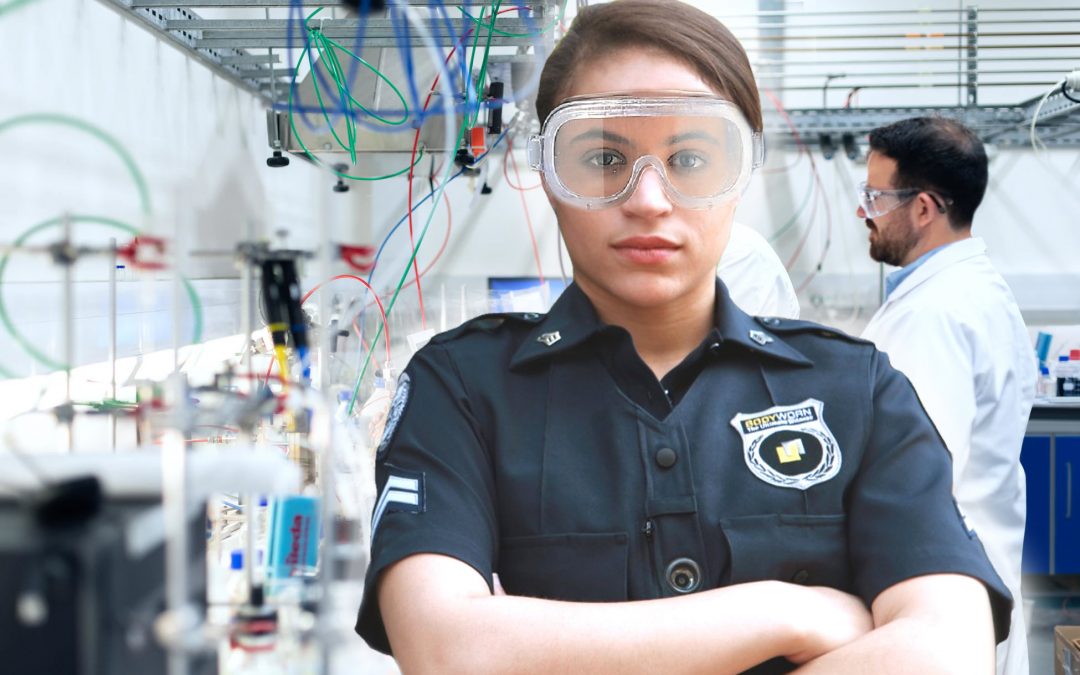Those who make a career in safety have two basic choices:
- Be a transformational leader who builds organizational culture in which health, safety and the environment are an integral and important part of life for everyone.
- Be that person with a clipboard, always on the prowl for violators — a “safety cop.”
That’s not an official title, of course, but it is a role in which many safety professionals unfortunately find themselves. It’s the safety career to be most avoided. Here’s why.
Those who choose this option sooner or later discover that their career has become an exhausting and pointless game of whack-a-mole — the more safety issues they find, the more crop up.

A collage of eye protection noncompliance in the lab taken from the websites of college and university science departments
Just Google it. With a little searching, almost anyone can easily find dozens of photos of people not wearing PPE in the lab when they clearly should be, proudly displayed in high resolution on public-facing college and university websites.
The fact that there are so many violations to be found is great for job security, but let’s be honest: spotting incidents of noncompliance is not the most fulfilling use of your life. Worse, it causes others to perceive you as merely an enforcer, and once that perception sets in, your job actually gets harder. Sure, they may throw on a pair of goggles whenever you’re in the room, but you will succeed in producing only perfunctory compliance at best. So how does one avoid the career of a safety cop?
Principles, Not Rules
Rules are important. Where would any safety program be without rules? That being said, if someone asks you a question about safety, “29CFR1910.132” is probably not the best answer to give them. In other words, the reason eye protection is important is because I care about you and I want you to be able to read books to your grandchildren, not because of a citation I memorized in safety cop academy. When others see you as a human who cares, they will be more inclined to listen.
Everyone in the lab needs to understand that the reason safety rules exist is not because safety professionals love finding violations. It’s not because they’re intent on finding a way to make things take longer and cost more money. It’s because they know that when someone tried it that way, they got hurt.
Be a Windsock
Bottom line, no matter what your current job is, envision your role as more of a windsock rather than an enforcer. A windsock doesn’t tell anyone how to behave. It just tells them which way the wind is blowing and how strong it is. Use LSI’s collection of over 5,000 lab accidents and the 600 fatalities on the labsafety.org Memorial Wall to make the point. Then allow others to make the choice.

